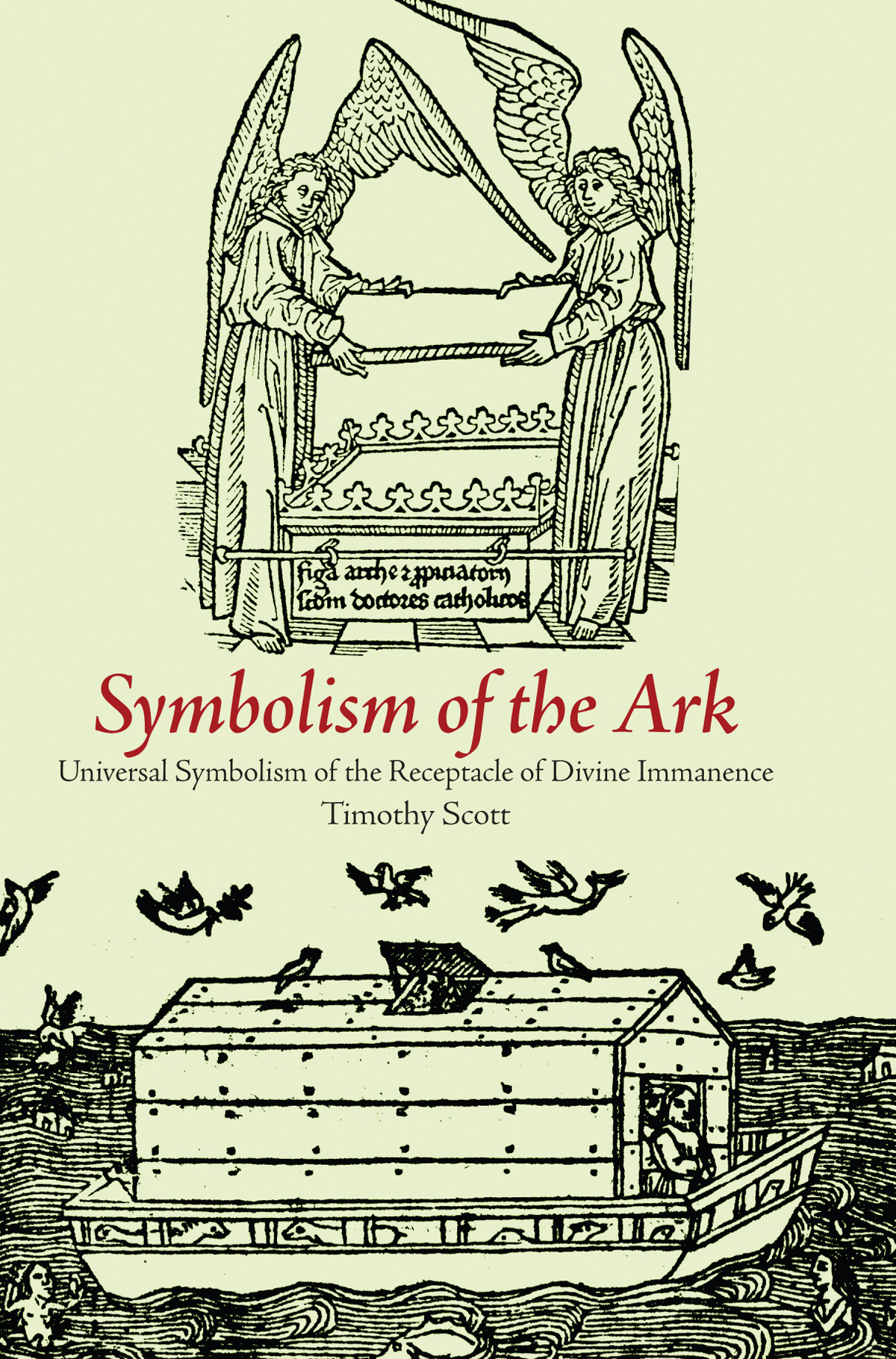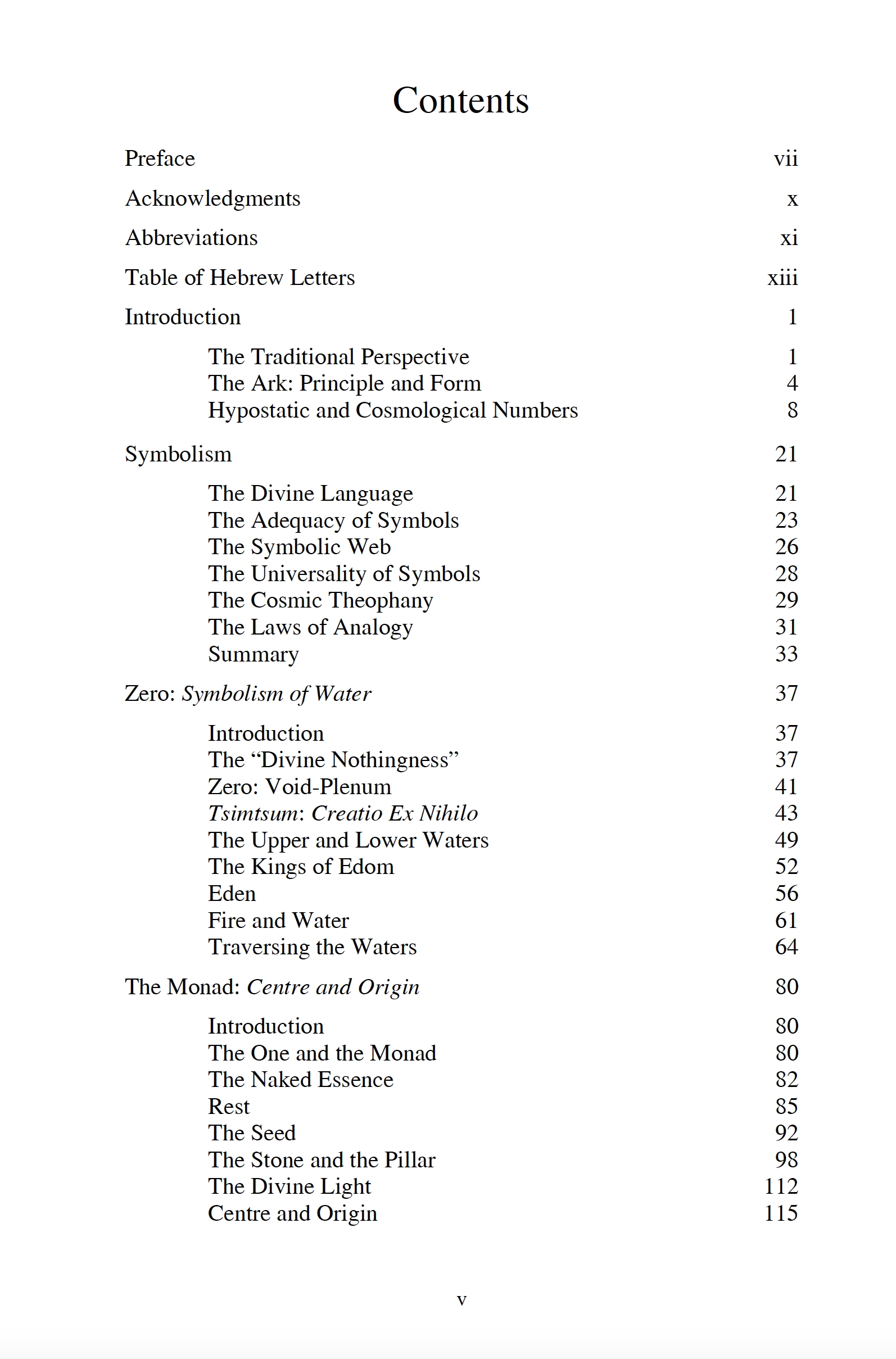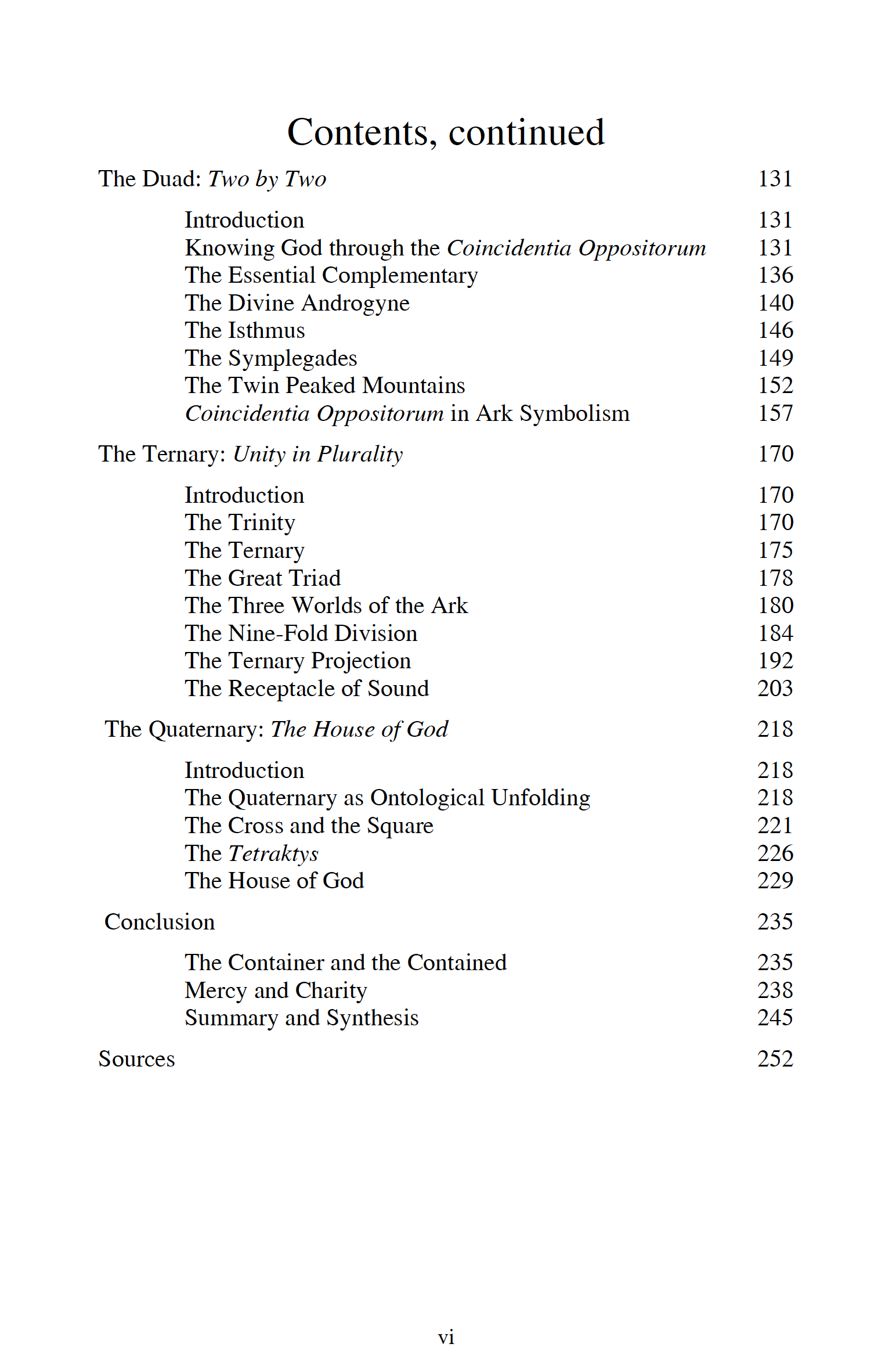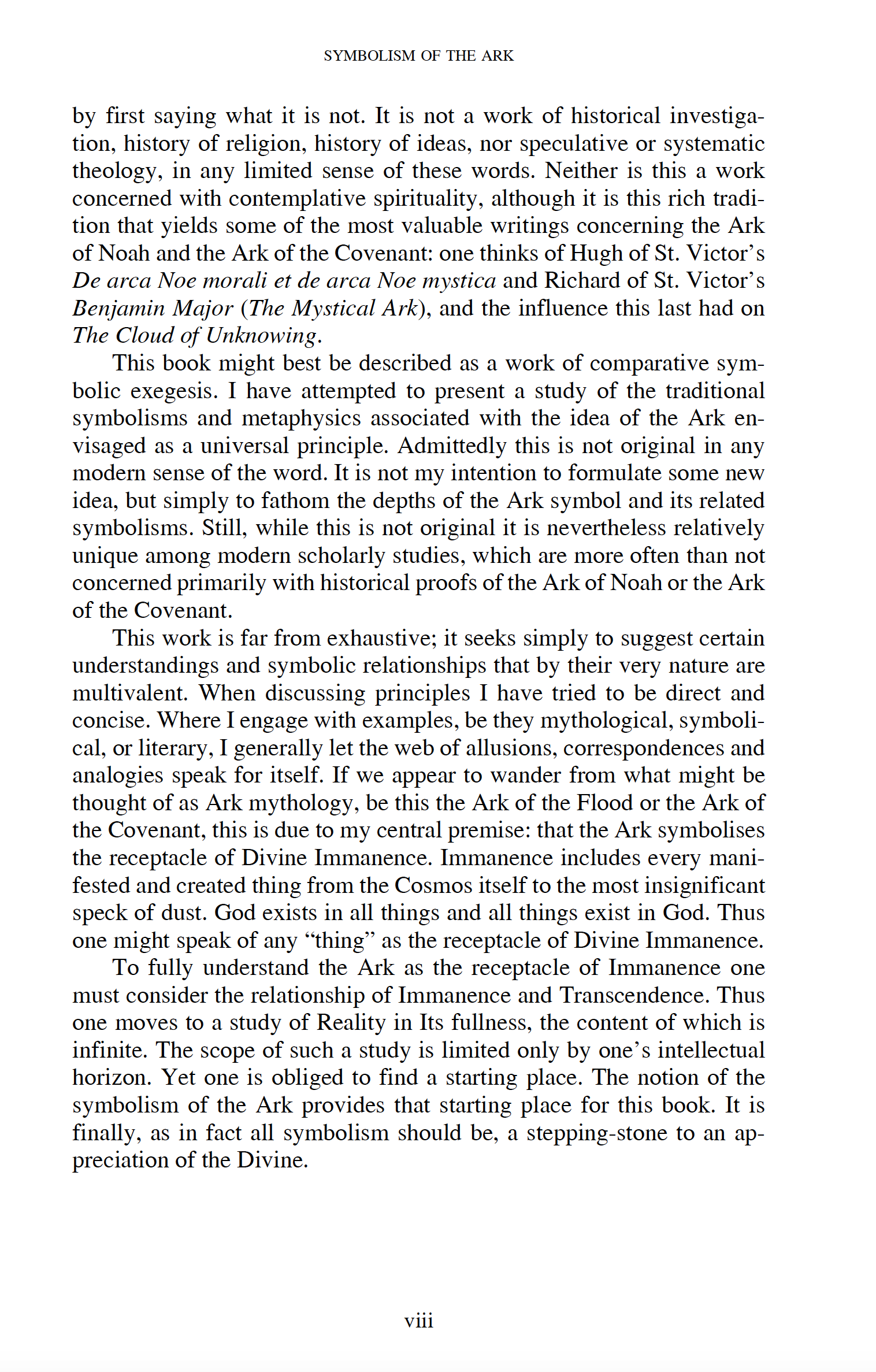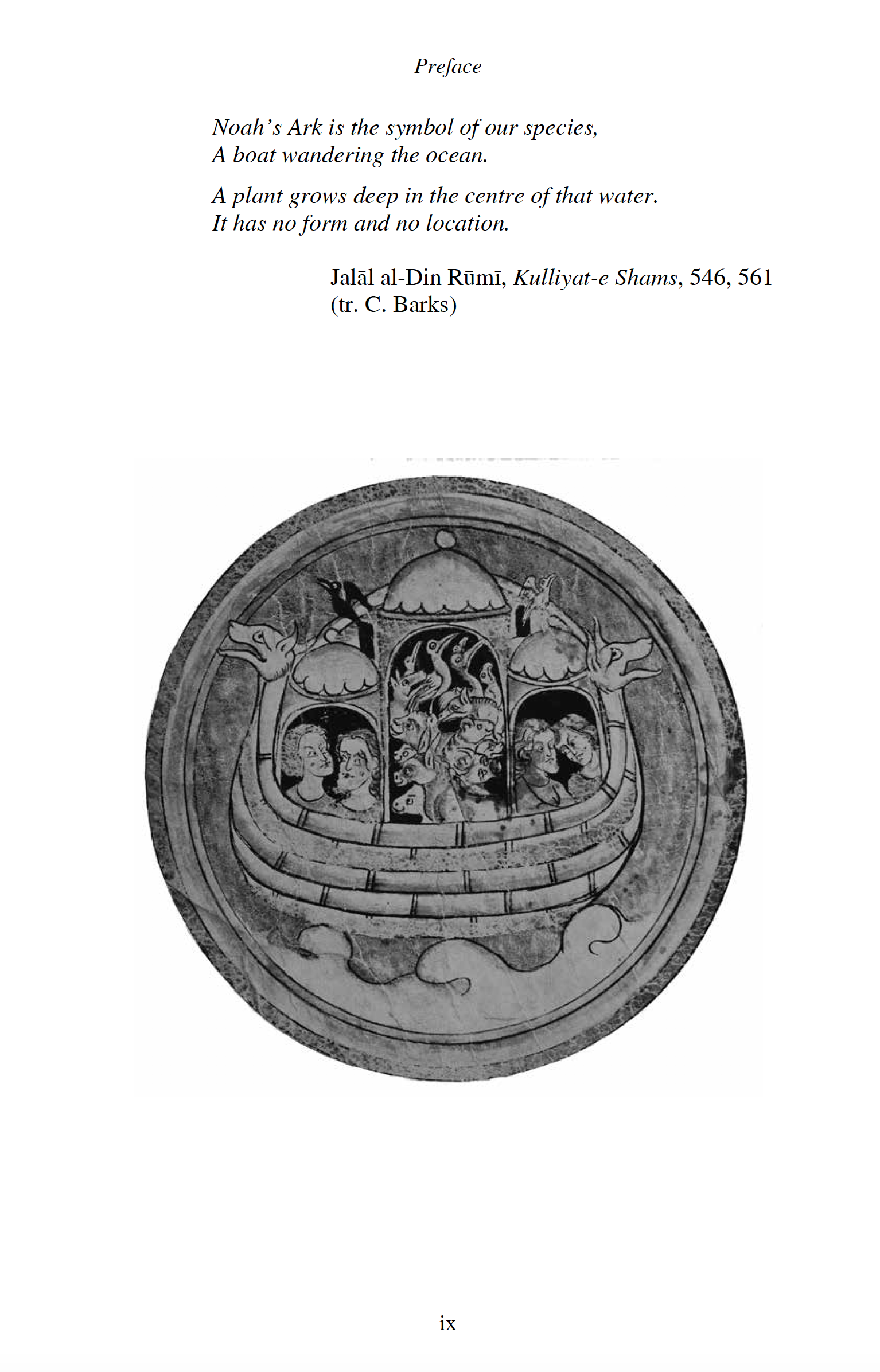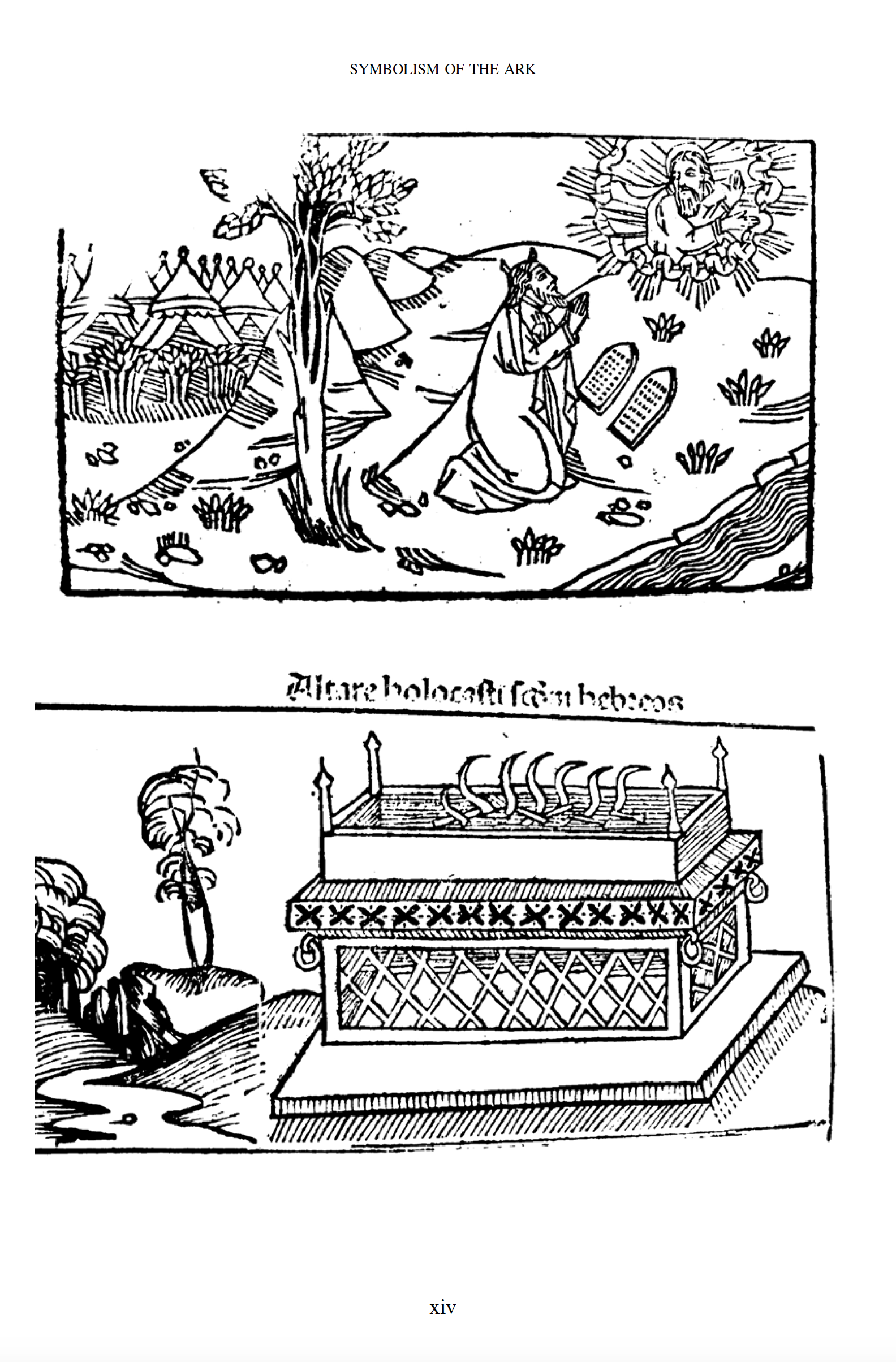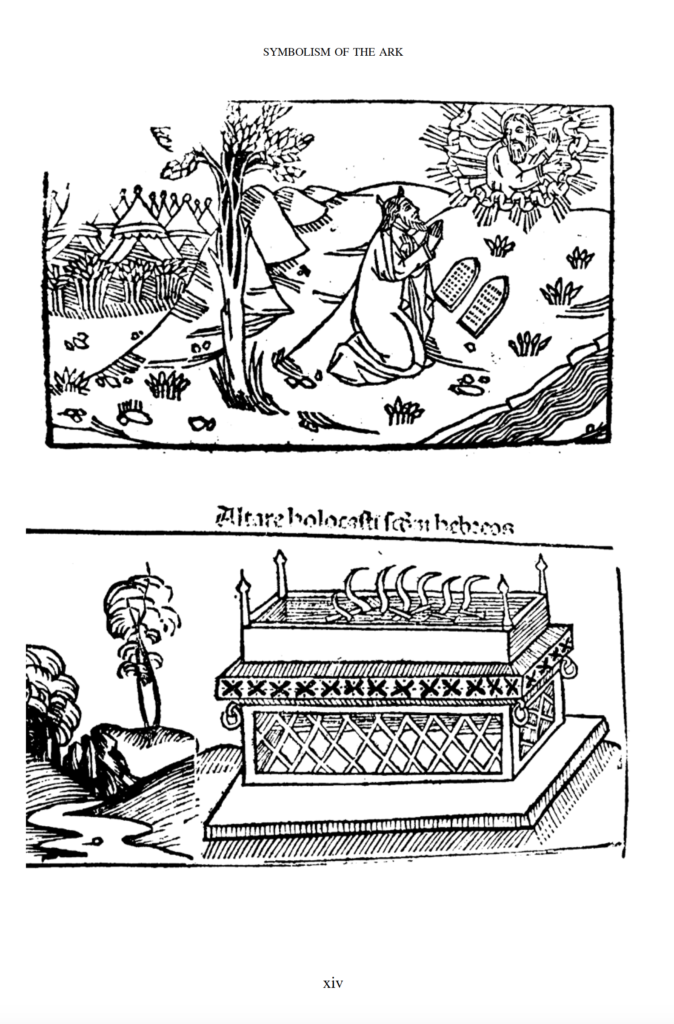
Symbolism of the Ark – Universal Symbolism of the Receptacle
of Divine Immanence by Timothy Scott
Preface
In diverse traditions we find an ensemble of symbols, motifs and narratives centering on the idea of a “container” or “receptacle” for the divine Presence. This idea is found in the symbolism of what we might loosely call “the Ark.” In the Semitic traditions this symbolism is most conspicuous in the biblical accounts of the Ark of Noah and the Ark of the Covenant. The aim of this book is to uncover the more or less universal significance of Ark symbolism through an exploration of its biblical expressions. The starting point for this inquiry is a set of immutable metaphysical and cosmological principles constituting the philosophia perennis, which informs the world’s integral mythological and religious traditions. I understand the Ark as the receptacle of Divine Immanence or, what amounts to the same thing, as the dwelling place of God. Immanence may be symbolised by a series of numerical hypostases, the most fundamental of which is the progression from the monad to the quaternary. In turn, the unfolding of the quaternary reveals the fullness of the decad, with the number ten adequately expressing the return of the monad to metaphysical zero. With the account of the Ark of Noah and, to a lesser extent, the Ark of the Covenant in the foreground, we survey the symbolic “progression” from zero to four. Thus the mythology of the Ark of Noah is considered as the movement from zero (the waters of the flood), through the principial monad (the Ark as “seed”), via the duad as both retraction (“two by two”) and emanation (the “twin peaked mountains”), to the ternary, both as a hierarchy of constituent elements (the “three decks” of the Ark) and as a creative “power” (the “three sons” of Noah), to the quaternary, which may be said to express Immanence in terms of cosmic stability (the Temple, the Ka‘bah). The Noah myth is an expedient point of departure for a consideration of the Ark as a universal symbol with two fundamental expressions: the Ark as the divine “vehicle” (boat, ship, chariot) and the Ark as the “house of God.” These, however, are only the most obvious expressions of the symbolism under investigation and allusion is made to a variety of other related symbolic motifs (cup, trumpet, conch, heart, amongst others). In the final analysis we are engaged in an inquiry into universal metaphysical and cosmological principles.
The Ark is the receptacle of Divine Immanence. However, such a statement is too simple or even too obvious to bring into focus the vast body of symbolisms and the complex hermeneutics that explicate it. My aim is two-fold: to present an examination of the metaphysics related to the symbolism of the Ark, and to alert the reader to the broad scope of this symbolism. It might help to clarify the nature of this enterprise by first saying what it is not. It is not a work of historical investigation, history of religion, history of ideas, nor speculative or systematic theology, in any limited sense of these words. Neither is this a work concerned with contemplative spirituality, although it is this rich tradition that yields some of the most valuable writings concerning the Ark of Noah and the Ark of the Covenant: one thinks of Hugh of St. Victor’s De arca Noe morali et de arca Noe mystica and Richard of St. Victor’s Benjamin Major (The Mystical Ark), and the influence this last had on The Cloud of Unknowing.
This book might best be described as a work of comparative symbolic exegesis. I have attempted to present a study of the traditional symbolisms and metaphysics associated with the idea of the Ark envisaged as a universal principle. Admittedly this is not original in any modern sense of the word. It is not my intention to formulate some new idea, but simply to fathom the depths of the Ark symbol and its related symbolisms. Still, while this is not original it is nevertheless relatively unique among modern scholarly studies, which are more often than not concerned primarily with historical proofs of the Ark of Noah or the Ark of the Covenant.
This work is far from exhaustive; it seeks simply to suggest certain understandings and symbolic relationships that by their very nature are multivalent. When discussing principles I have tried to be direct and concise. Where I engage with examples, be they mythological, symbolical, or literary, I generally let the web of allusions, correspondences and analogies speak for itself. If we appear to wander from what might be thought of as Ark mythology, be this the Ark of the Flood or the Ark of the Covenant, this is due to my central premise: that the Ark symbolises the receptacle of Divine Immanence. Immanence includes every manifested and created thing from the Cosmos itself to the most insignificant speck of dust. God exists in all things and all things exist in God. Thus one might speak of any “thing” as the receptacle of Divine Immanence.
To fully understand the Ark as the receptacle of Immanence one must consider the relationship of Immanence and Transcendence. Thus one moves to a study of Reality in Its fullness, the content of which is infinite. The scope of such a study is limited only by one’s intellectual horizon. Yet one is obliged to find a starting place. The notion of the symbolism of the Ark provides that starting place for this book. It is finally, as in fact all symbolism should be, a stepping-stone to an appreciation of the Divine.
Contents
Preface vii
Acknowledgments x
Abbreviations xi
Table of Hebrew Letters xiii
Introduction 1
The Traditional Perspective 1
The Ark: Principle and Form 4
Hypostatic and Cosmological Numbers 8
Symbolism 21
The Divine Language 21
The Adequacy of Symbols 23
The Symbolic Web 26
The Universality of Symbols 28
The Cosmic Theophany 29
The Laws of Analogy 31
Summary 33
Zero: Symbolism of Water 37
Introduction 37
The “Divine Nothingness” 37
Zero: Void-Plenum 41
Tsimtsum: Creatio Ex Nihilo 43
The Upper and Lower Waters 49
The Kings of Edom 52
Eden 56
Fire and Water 61
Traversing the Waters 64
The Monad: Centre and Origin 80
Introduction 80
The One and the Monad 80
The Naked Essence 82
Rest 85
The Seed 92
The Stone and the Pillar 98
The Divine Light 112
Centre and Origin 115
The Duad: Two by Two 131
Introduction 131
Knowing God through the Coincidentia Oppositorum 131
The Essential Complementary 136
The Divine Androgyne 140
The Isthmus 146
The Symplegades 149
The Twin Peaked Mountains 152
Coincidentia Oppositorum in Ark Symbolism 157
The Ternary: Unity in Plurality 170
Introduction 170
The Trinity 170
The Ternary 175
The Great Triad 178
The Three Worlds of the Ark 180
The Nine-Fold Division 184
The Ternary Projection 192
The Receptacle of Sound 203
The Quaternary: The House of God 218
Introduction 218
The Quaternary as Ontological Unfolding 218
The Cross and the Square 221
The Tetraktys 226
The House of God 229
Conclusion 235
The Container and the Contained 235
Mercy and Charity 238
Summary and Synthesis 245
Sources 252
——-
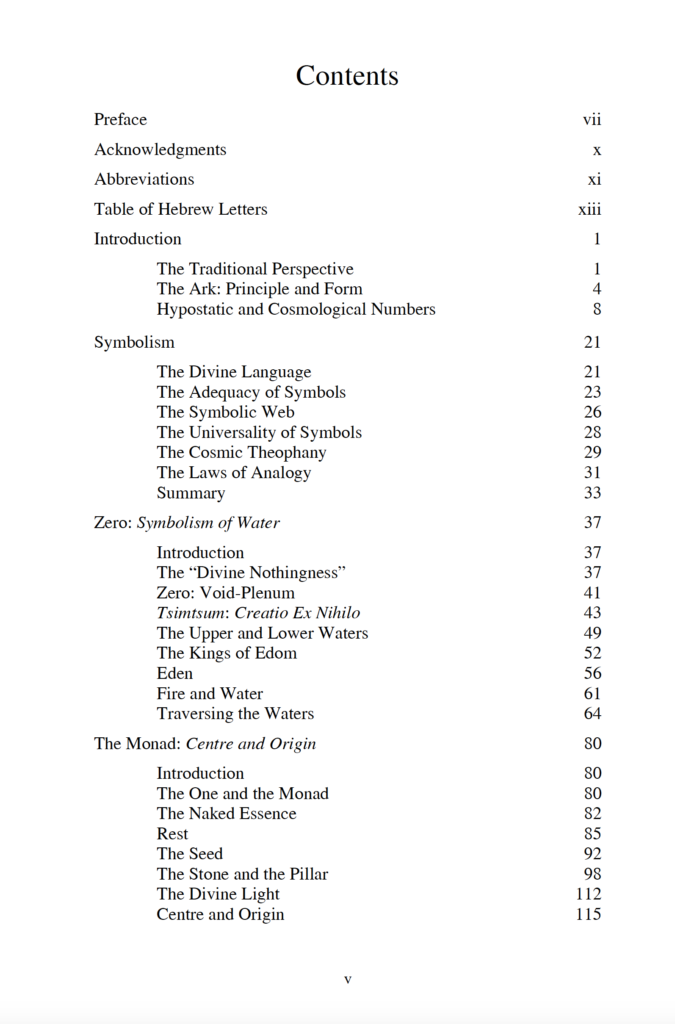
Symbolism of the Ark – Universal Symbolism of the Receptacle
of Divine Immanence by Timothy Scott
